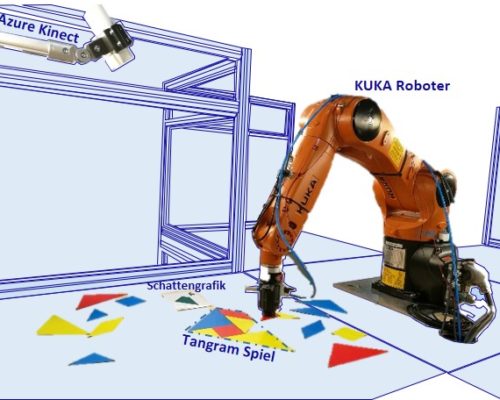
Problem
Autonomous learning of an intelligent robotic system has enormous potential to solve assembly tasks. Deep reinforcement learning algorithms are generally used in robotics. Their application level is still limited to relatively simple tasks due to the complexity and variability of the industrial environment. Deep reinforcement learning will combine with subfields of machine learning such as supervised learning to compensate for drawbacks and solve industrial problems. The robots of the future will be able to adapt to different environments, think autonomously, and solve problems on their own, under given conditions.
Objectives
The demonstrator consists of a robot arm, a camera, a vacuum gripper, a random target puzzle and several polygons. The idea is to give the robot the particular target puzzle and let the robot’s AI think about how to put the 7 polygons together to create the same graphic as that of the target puzzle.
Approach
A camera system is used to detect and determine the 3D position and orientation of the polygons. An intelligent robot system combines K-nearest neighbor, decision tree, and Deep Q network to learn different tangram puzzles. After determining the current position of the polygons and the solution for assembly, a robot path is planned.
Areas of Application
The intelligent system is used to analyze the mechanical components so that the robot arm learns to assemble various mechanical components accordingly.

